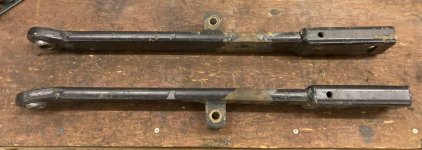You are right and not questioning it at all. I am just talking in the area of " good enough for government work". The fact is the bending has happened for whatever reason. One can buy or try to repair. Repair as I suggested is probably better than good enough or you buy a band new one $$$$.
You are right and not questioning it at all. I am just talking in the area of " good enough for government work". The fact is the bending has happened for whatever reason. One can buy or try to repair. Repair as I suggested is p
If it was my repair,I would just straighten it with a press. Cold working steel results in work hardening which makes the metal
harder,
stiffer, and
stronger, but less
plastic. But it may
cause cracks of the piece if too much “work” is done. The small bend in this item should be OK

